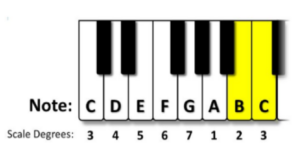The US Court of Appeals for the Federal Circuit denied a patent owner’s request for en banc rehearing of a panel decision that invalidated a patent for lack of written description on the basis that a person of skill in the art would not be able to recognize the clinical efficacy of the claimed dose and thus would not recognize that the inventors were in possession of the claimed invention at filing. Biogen International GMBH, Biogen MA, Inc. v. Mylan Pharmaceuticals Inc., Case No. 20-1933 (Fed. Cir. March 16, 2022) (per curiam) (Moore, C.J., Lourie, Newman, JJ., dissenting).
Biogen owns a patent relating to the drug Tecfidera®. The patent claims a method of treating multiple sclerosis with dimethyl fumarate (DMF) at a specific dose of 480 mg per day via oral administration (DMF480). In the written description, the patent describes a method for treating a neurological disease using DMF and states that the neurological disease can be multiple sclerosis. The patent discloses that an effective dose of DMF for oral administration can be “from about 0.1 g to 1 g per day, 200 mg to about 800 mg per day (e.g., from about 240 mg to about 720 mg per day, or from about 480 mg to about 720 mg per day; or about 720 mg per day).”
Biogen sued Mylan for infringement after Mylan submitted an abbreviated new drug application (ANDA) for a generic version of Tecfidera®. Mylan challenged the validity of the patent based on lack of written description. The district court invalidated the patent, finding that the claimed method lacked written description support because the DMF480 dose was listed only once in the specification and finding that the specification’s focus on basic research and broad DMF-dosage ranges showed that the inventors did not possess a therapeutically effective DMF480 dose at the time of filing. Biogen appealed.
In a 2–1 panel decision, the Federal Circuit affirmed the district court finding, explaining that “a skilled artisan would not have recognized, based on the single passing reference to a DMF480 dose in the disclosure, that DMF480 would have been efficacious in the treatment of MS, particularly because the specification’s only reference to DMF480 was part of a wide DMF-dosage range and not listed as an independent therapeutically efficacious dose.”
Judge O’Malley issued a dissenting opinion, questioning whether the district court erred in requesting clinical data showing efficacy of the claimed DMF480 dose under the written description context.
Biogen timely petitioned for en banc review, raising two questions:
- Must a “written description” prove the invention’s efficacy?
- Is there a need to repeatedly emphasize elements of the invention in order to satisfy the written description requirement?
The Federal Circuit issued a 6–3 decision denying the en banc petition. Judge Lourie wrote in dissent, joined by Chief Judge Moore and Judge Newman, calling this case “an outlier” at “the farthest end of the spectrum of cases where written description has not been found” given that every claim limitation was expressly described [...]
Continue Reading
read more

 Subscribe
Subscribe



